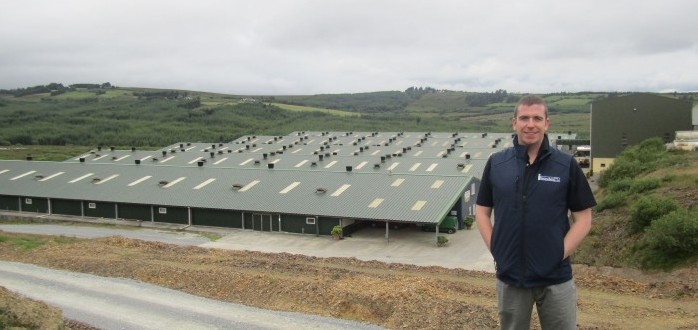Writing in the January issue of Pig World, Shane McAuliffe, whose family produces 50,000 pigs per year for the Truly Irish brand, sets out where the Irish pig stands at the start of a new year.
With the horrors of 2022 behind us, Irish pig farmers saw a return to profitability by April of this year.
Of course, when I say profitability, I refer to filling the big black hole from 2022. However, starting from the end of September, we have seen the price drop seven times in 10 weeks, which has left many farmers in a state of shock.
Farmers have amassed a huge level of debt and, as we must always strive for greater sustainability, we also need to invest money back into our farms. With this huge level of uncertainty, one must ask how many more pig farmers will go out of business before we are guaranteed fairness in the supply chain?
Just before Christmas, Ireland’s long-awaited Agri Food Regulator, An Rialálaí Agraibhia was formally been established. This new independent authority is hoped to bring fairness and transparency to the agricultural and food supply chain.
No-one involved with the pig sector was appointed to the board, although my father was shortlisted. With his direct experience of working with primary and secondary processors and retailers, he would have been a valuable addition.
Speaking of investment, the TAMS 3 Pig and Poultry Investment Scheme opened up in April for applications. Grant aid for this scheme will be paid at a rate of 40% up to an expenditure ceiling of €500,000.
Eligible investments range from upgrades to feed & ventilation systems, to building new free farrowing housing. Irish pork already has the lowest carbon footprint in the EU, and, undoubtedly, these investments would help us improve on our sustainability journey – but if farmers do not see a future for their business they are not going to invest.
The Pig Census from the Central Statistics Office shows we have the lowest pig numbers in Ireland in 35 years (137,000 sows), a direct result of the losses faced in 2022.
Despite the challenges production efficiency is improving. The Teagasc National Pig Herd Performance report for 2022, shows that the average Irish sow procures 14.81 pigs born alive per litter and 27.4 pigs per year, with the top 25% averaging 30.3. FCE from weaning to sale is 2.45, with the top 25% at 2.28.
The full report can be viewed on the Teagasc website, where you’ll also find many publications and events Teagasc were involved in this year, including the Pig Open Day in May and the National Pig Farmers Conference in October.
The latest figures from Teagasc show the average price for pigs in 2023 was €2.24/kg, with margin over feed at 69 cents/kg. Towards the end of the year, 3.48 million pigs had been slaughtered, down 9.3% on 2022. Exports from January to September show volumes were down 17%, with China down 7%.
Our National Pig HealthCheck Programme from Animal Health Ireland has published its latest results, and for another continuous year, Irish pig farms have a higher Biocheck biosecurity score, at 76%, split between an external biosecurity score of 83% and an internal biosecurity score of 69%. Antimicrobial usage for 2022 ranked at 54.32mg/kg, down from 83.07mg/kg in 2021, testament to the excellent work being done by stakeholders across the industry.
During 2023, I made an effort to spent more time visiting secondary schools to speak to Agricultural Science students about pig production in Ireland. It’s always a very worthwhile and enjoyable experience and I recommend farmers in any country to try and get involved – after all, these young people are the consumers of the future.
Thank-you to Young NPA, who invited me to York in November to speak at their national event. It’s always fantastic to meet up with friends in the UK pig sector.
I was also lucky enough to be taken to Taiwan in September by HIPRA to give my ‘5 best practice recommendations’ to Taiwanese pig farmers at an exciting event in the city of Tainan. And I was a speaker in June at Iowa State University’s Iowa Swine Day, where I spoke about reducing the carbon footprint of European pork.
Indeed, I look forward to a further lower footprint of our own pork here at home in 2024 as we invest in solar panels!
- As well being a pig farmer in Co Kerry, Shane is a former secretary of the Irish Pig Health Society and the Irish branch of the European Pig Producers, and sits on the Irish Farmers’ Association’s Animal Health Committee. He is also a part-time university lecturer in Agricultural Sciences.
- Follow @ShaneMcAuliffe1




